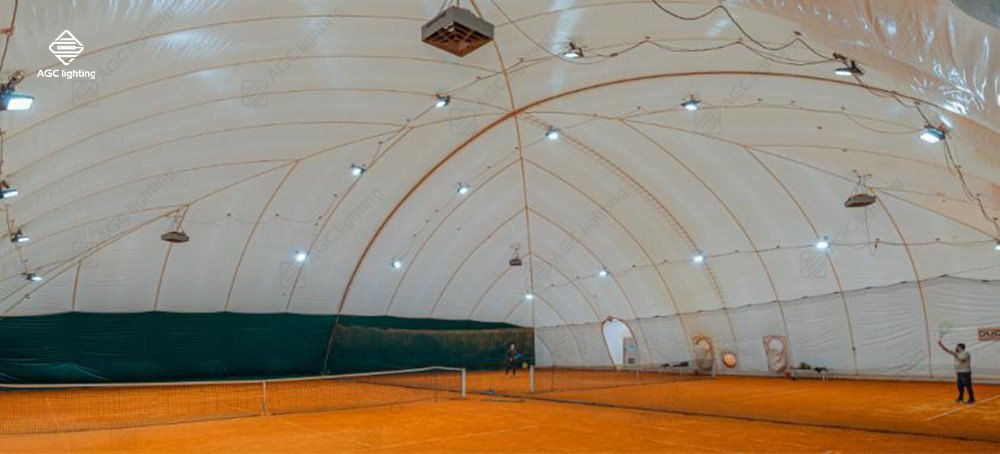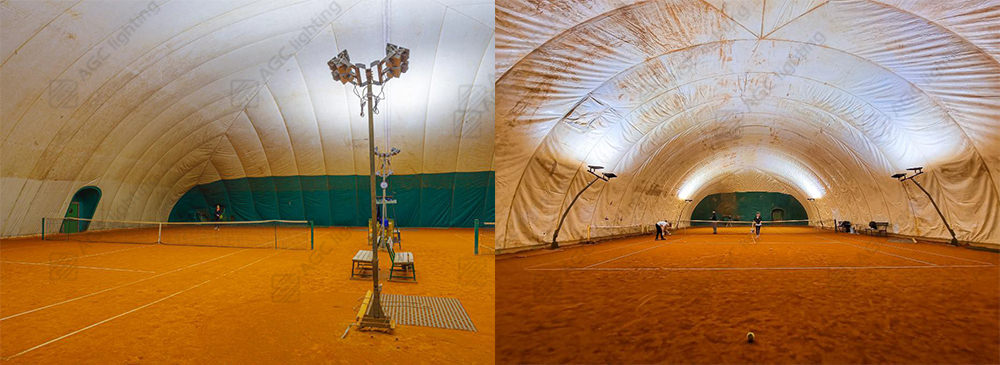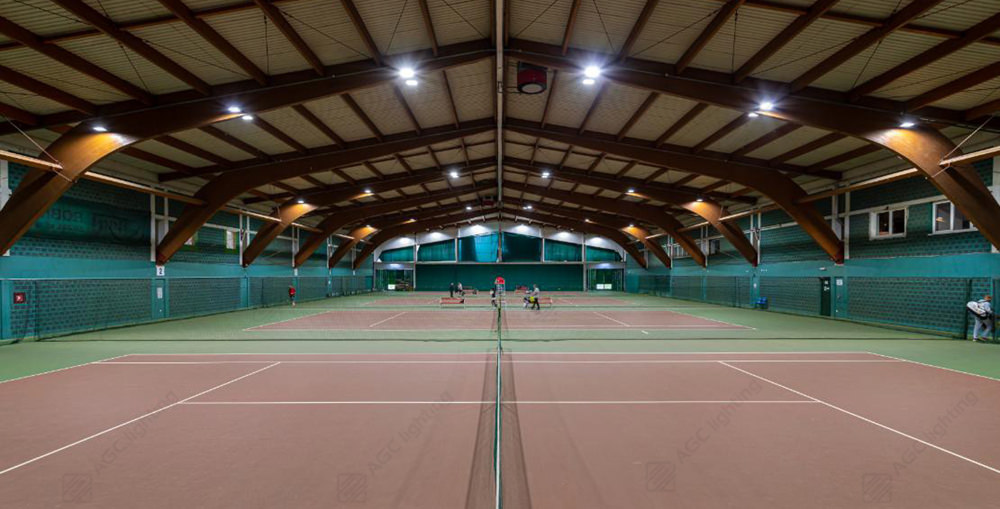Have you ever encountered a project involving indoor tennis court lighting before? The most common method is direct lighting, which is typically seen in our indoor tennis court projects.

However, a recent European client has completed some projects using indirect lighting, such as the one shown in the image below.

This may raise the question of when shall we choose indirect or direct lighting?
The choice between indirect and direct indoor tennis court lighting depends on several factors, including the size of the court, the height of the ceiling, the type of playing surface, and the lighting requirements of the players.
Indirect lighting is typically preferred in larger indoor tennis courts where direct lighting would create glare and shadows that could interfere with the player visibility.

This type of lighting is also ideal for courts with low ceilings, where direct lighting would be too harsh and create an uncomfortable playing environment. Indirect lighting can provide a more uniform and diffused light that minimizes shadows and glare, and ensures that the entire court is evenly illuminated.
Direct lighting, on the other hand, is better suited for indoor tennis courts with higher ceilings. Direct lighting can provide bright, focused lighting that illuminates the playing surface and allows players to see the ball clearly, which is essential for a high-level of play. Direct lighting is also a good choice for courts with surfaces that require more light, such as clay or synthetic turf surfaces.

Ultimately, the decision between indirect and direct indoor tennis court lighting depends on a variety of factors unique to each facility. Our lighting designer can help you evaluate your specific needs and design a lighting system that will provide optimal lighting conditions for your players.
If you have any indoor sports court lighting projects, we could offer free lighting design services and give the best appropriate solution.












